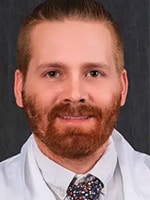The why and how of an automated neutralizing antibody testing system
May 2023—In 2020, when much of the world was locked down due to the pandemic, researchers at the University of Texas Medical Branch, in Galveston, began helping pharmaceutical companies evaluate the effectiveness of COVID-19 vaccines using a neutralizing antibody assay they had developed. A hot minute later (or so it seemed), some UTMB pathologists concluded that their patients might want to know if they had neutralizing SARS-CoV-2 antibodies.
“I thought, I want to know that. I want to know—[using] a real neutralizing antibody test—did my vaccine work?” says Michael Laposata, MD, PhD, professor and chair of the Department of Pathology at UTMB. Dr. Laposata subsequently spearheaded a project designed to use automation to answer this question—and others.
Neutralizing antibody tests provide more information about patient immunity than general antibody tests because they specifically measure the antibodies that prevent pathogens from infecting cells, Dr. Laposata says. While other neutralizing antibody assays often use pseudotyped viruses to assess neutralizing antibody levels, UTMB’s assay uses live virus as a reagent. This makes the assay more accurate for assessing neutralizing antibody levels—and more challenging to implement.
“The trouble is, when you have an active SARS-CoV-2 virus, you can’t put that in the middle of a clinical lab,” Dr. Laposata says.

Dr. McCaffrey
As members of the pathology team discussed how to ensure the safety of laboratorians if the assay were offered as a clinical test, the conversation turned to fully automating the process, according to Peter McCaffrey, MD, assistant professor of pathology, director of pathology informatics, and director of the Division of Bioinformatics and Artificial Intelligence at UTMB.
The automated neutralizing antibody testing system created by the pathology team is a line of connected lab instruments that Dr. McCaffrey describes as the size of a small school bus. A laboratorian can put a tray of serum specimens into the machine through a drawer to start the assay process and then walk away. Approximately 20 hours later, when the process is complete, a titer, or numerical ratio reflecting a patient’s dilution of neutralizing antibodies, is automatically delivered to the electronic health record. Most of the time required for the assay is due to incubation periods—including one that lasts 16 hours, Dr. McCaffrey says.
To help automate the process, UTMB partnered with the Swiss company ABB Robotics, which has offices in Texas. The company provided the medical center with robotic arms to perform tasks that normally would be managed manually. More specifically, a robotic arm takes the tubes of specimen that were placed in the drawer on the system and heat inactivates the serum, removes the tube tops, and sorts the tubes into racks until a batch is complete. The robotic arm then sends the batch to a liquid handler, which performs several processes, including laying different dilutions of patient serum on plates, adding virus to the plates, and adding dye, with each step followed by an incubation period. Another robotic arm then takes the plates from the liquid handler and moves them to a scanner that images them, performs analytics, and renders a numerical data result from the images.
In addition to the robotic arms, the automated system comprises a Tecan Fluent 1080 liquid handler, two Liconic incubators, and three Thermo Scientific Cellinsight CX5 imaging platforms, Dr. McCaffrey says. An automated rail shuttles the specimens between the various pieces of equipment.
While the team from ABB Robotics programmed the robotic arms to perform each task, Dr. McCaffrey and a programmer in UTMB’s pathology informatics department collaborated to write 10,000 lines of code so the various components used in the automated process would interact seamlessly.
The first challenge was ensuring that the different pieces of equipment could speak to each other, he says. “There are a lot of idiosyncrasies between vendors, products, era of products, and how they communicate that had to be normalized first.”
Some of the idiosyncrasies in communication protocols required creative workarounds to allow equipment to interact, Dr. McCaffrey says. For example, when the scanners were operated manually, they produced spreadsheets of data after imaging the plates. But when they ran automatically as part of the automated system’s workflow, the scanners produced what looked like large databases of raw measurements instead. To ensure that the analyzers delivered data in a useful format to the next step in the process, Dr. McCaffrey and his colleague built a homegrown spreadsheet program to organize and format the data output from the scanners.
“To put together all the raw measurements to create the final output file, we had to not only make that spreadsheet but make it so that it would work inside our automated system in a way that made sense and wouldn’t be sloppy,” he says. The applet created by Dr. McCaffrey and his colleague formats the final data output from the scanner into a spreadsheet that can be read by the Prism analytical software that UTMB uses at the end of the automated process to calculate titers.
An equally daunting challenge was scheduling, Dr. McCaffrey says. The high-volume system can run 500 to 1,000 tests a day. But to run that many tests, it had to be able to continue to accept new specimens while simultaneously tracking where other batches of specimens were in the process and scheduling the optimal times to move those batches to the next step. “It involved a lot of queuing logic around how you run what piece of the workflow at what point in time,” he explains, “and how you prioritize things that are at different steps in the process.”
The technical work involved in fully automating the assay process took a little more than a year, and the system went live at the end of 2022, Dr. McCaffrey says.
The automated testing system is part of UTMB’s CLIA-approved clinical lab, but, because it uses live virus, it is housed in a room in the basic science building as a safety precaution and is completely self-contained. Samples placed in the drawer on the system are automatically moved through the testing process, sent to an autoclave for sterilization, and then disposed of. The robotic arms operate behind hard plastic windows, and plastic barriers surround the remaining equipment, making it seem like the whole lab is in a secure bubble, Dr. Laposata says.

Dr. Laposata
The automated system is not designed exclusively for one form of a virus, Dr. Laposata notes. By changing the reagent in the system, the pathology team can use the equipment to test for various SARS-CoV-2 strains or even an unrelated virus. But it takes approximately two to three weeks to switch to a new viral target, he explains.
Last month, UTMB began altering the system to test for the SARS-CoV-2 XBB.1.5 strain in lieu of the BA.5 strain, which the system had tested for since it went live. The pathology team expects that with some workflow adjustments, the automated system eventually will be able to run assays for two or more viruses simultaneously, Dr. Laposata says.
So far, UTMB has primarily tested specimens from its employees. Before the lab offers the automated assay more widely, the pathology team wants to collect more data on SARS-CoV-2 neutralizing antibody levels, Dr. Laposata explains. To do so, UTMB plans to study the test results from more than 100 patients who have never been infected with any known variant of SARS-CoV-2.
The goal of studying these samples is to identify a threshold representing the minimum amount of neutralizing antibody present in people who have never been vaccinated for COVID-19 nor infected with the SARS-CoV-2 virus, Dr. Laposata says. Levels of the antibody will be higher in those who are immune than in those who have never been vaccinated nor infected and are not immune. Once the level associated with immunity is determined, UTMB will be able to inform patients, when they receive test results, whether their neutralizing antibody levels are similar to those of people who have strong immunity to the virus, he adds.
Dr. Laposata expects to identify an immunity threshold in the near future, allowing UTMB to offer the test broadly this summer. Once the assay is widely available, physicians or health care facilities will be able to send the UTMB laboratory a serum sample or blood sample (for which the lab can separate serum from blood) to receive a result. Dr. Laposata estimates the test will cost between $100 and $200.
The medical center eventually plans to offer a T-cell immunity test as a companion to the neutralizing antibody test. T-cell immunity lasts longer than neutralizing antibody immunity, and having results from both types of tests would provide a more complete picture of patient immunity, Dr. Laposata says. The T-cell test, which is in a much earlier stage of development, will also be an automated, high-volume test, but it does not require live virus. Therefore, he adds, it would not need to be operated in as secure of an environment as the automated neutralizing antibody assay.
UTMB intends to use the automated neutralizing antibody testing system indefinitely, Dr. Laposata says. “We are looking at the world as having viral infections of one kind or another for the long term. The reason we have invested so much in this is that if the virus that comes next is another that produces disease, we should be able to measure immunity to it.”
—Renee Caruthers
Indica Labs and Xyall announce collaboration
Indica Labs and Netherlands-based Xyall have entered into a global strategic partnership that unites Indica’s artificial intelligence-powered, diagnostic digital pathology platform with Xyall’s automated tissue-dissection solutions.
“The collaboration will enable molecular laboratories to benefit from a fully digital and automated workflow for tissue macro dissection for molecular diagnostic testing,” according to a joint press statement from Xyall and Albuquerque, NM-based Indica.
The partnership brings together Indica’s flagship Halo AP anatomic pathology image-management and workflow software and Xyall’s Tissector HT high-throughput system for high-volume molecular labs and compact Tissector TT tabletop solution for low- to mid-volume molecular labs. Under the arrangement, slide annotations from Halo AP are automatically transferred to either of Xyall’s Tissector systems for use in tumor dissection.
“Our combined solution allows users to document and track each step of the dissection process,” Eric Runde, chief operating officer for Indica Labs, said in a press statement.
Halo AP is CE-IVD marked for use in primary diagnosis in the European Economic Area, Switzerland, and the United Kingdom. It is available for research use only in the United States.
Indica Labs, 505-492-0979
HL7 announces release of latest FHIR standard
The standards organization Health Level Seven International has published Fast Healthcare Interoperability Resources release five, which is intended to improve interoperability and data exchange.
FHIR R5, as it’s known, has been released as “a ‘trial use’ standard that retains prior mature, normative content while incorporating enhancements that are ready for implementation and feedback,” according to an HL7 press release.
This latest offering is designed to improve various aspects of patient data management, thereby minimizing interoperability-related errors, including duplicate lab tests and medication mistakes. It provides thousands of incremental updates, corrections, and other enhancements, HL7 reported.
FHIR R5 includes changes to the specification’s infrastructure that strengthen the management of coded terminologies and enhancements that allow extensions to be managed more effectively alongside the core specification. The new release also has topic-based subscription capabilities integrated into the core specification to support proactive event notifications in response to data changes in the source system, as well as new operations for managing large resources, such as groups and lists.
FHIR R5 was built, in part, using feedback gleaned from the global health care community’s experience with FHIR R4, published in 2018. HL7 plans to publish the next milestone release as a normative standard that is based on users’ feedback about FHIR R5.
Dr. Aller practices clinical informatics in Southern California. He can be reached at raller@usc.edu. Dennis Winsten is founder of Dennis Winsten & Associates, Healthcare Systems Consultants. He can be reached at dwinsten.az@gmail.com.